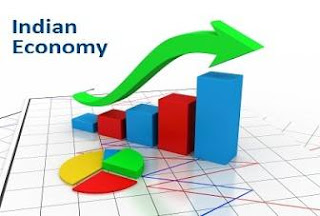As the year
comes to an end, it is also time to bid adieu to the high value bank notes.
Today is the last day to deposit old Rs 500 and Rs 1,000 notes in banks after
50 days of the announcement of demonetisation by the Prime Minister Narendra
Modi on November 08, 2016. From December 31, 2016, onwards, anyone holding Rs
500 or Rs 1,000 notes could be levied hefty fines.
Even though
the 50 days deadline now comes to an end, the daily struggle for lakhs and
lakhs of people so far to get their money back from the ATMs or bank branches
is not likely to end soon. Let's take a look at the positives and the weaknesses
of demonetisation of notes on the people and the economy at large.
Since the
decision to ban high value currency notes was taken in early November, the
government has showed the sunnier side of the note ban and its benefits on the
economy in the long run. From declaring war on black money to terror funding,
from fake currency to corruption, and finally becoming a cashless economy,
multiple reasons have been cited since the announcement of scraping Rs 500 and
Rs 1,000 notes.
With this move, the government planned to keep a
tight leash on the corruption front. This
decision came in as a blow for the black money holders having trucks of money
undeclared and who are enjoying life without paying any tax. The move has also emerged as a blow to funding of terror in
Jammu & Kashmir as well as Left-wing extremist violence across several
states. With this move, the hawala cash transfers to terrorists and separatist
elements based in Kashmir, have come to an abrupt halt.
Through the demonetisation exercise, the government
has been working hard to become a cashless economy and is inspiring more and
more people to adopt the digital payments system for their transactions. Usage
of cards – both credit and debit – has grown four-fold since the announcement
of demonetisation on November 8. Also, average ticket size of card transactions
has fallen, signalling that many Indians have started using cards for their
daily purchases.
Impact of demonetisation is also clearly visible with
tax collection figures witnessing double-digit growth. According to Finance Minister
Arun Jaitley, there has been a 26.2 per cent increase in central indirect tax
collection till November 30. This included robust growth in excise duty of 43.5
per cent, services tax 25.7 per cent and customs duty 5.6 per cent. Meanwhile,
net direct tax collections till 19 December had increased 13.6 per cent.
While numerous advantages of demonetisation rolling
into the economy could still be long way away, there are immediate
challenges the economy is already gazing upon. Even though new currency notes
have reached almost all parts of the country, bank branches are still not able
to quench the cash requests of customers. Most banks have set withdrawal limits
much below the mark prescribed by RBI which is Rs 24,000 per week.
Economic growth has also come off on account of low
liquidity in the system. Inadequate currency supply, in an economy which is
predominantly cash-driven, has reduced the buying power of people, and at a
macro level, their consumption pattern.
However, the Modi
Government’s bold gamble with note-bandi in the long run is expected to propel
growth capital as large swathes of informal economy becomes formal. It is expected to significantly transform
the domestic economy in due course in terms of greater inter-mediation,
efficiency gains, accountability and transparency through increasing adoption
of digital modes of payments.
Latin Manharlal Group















